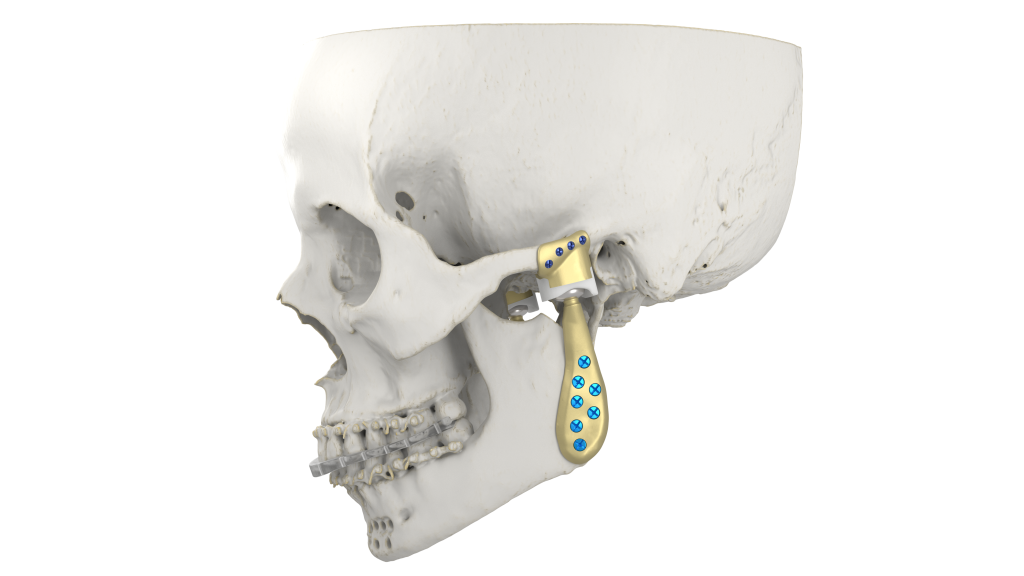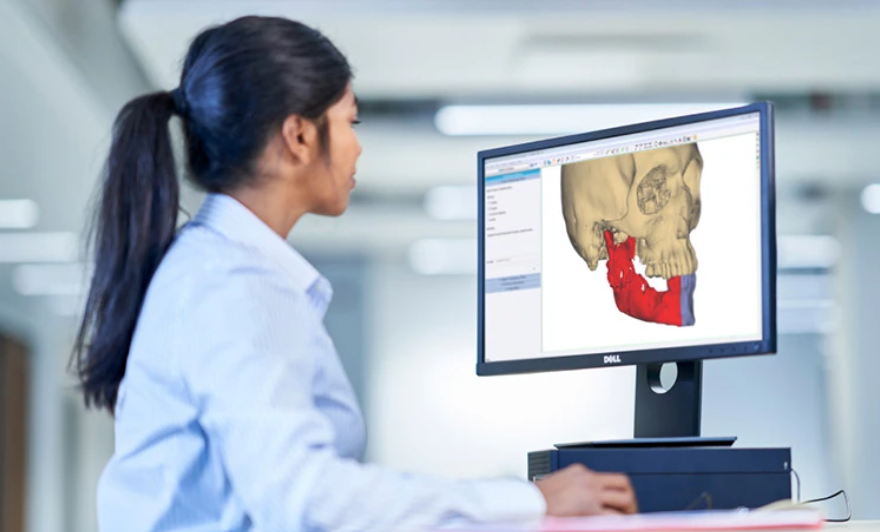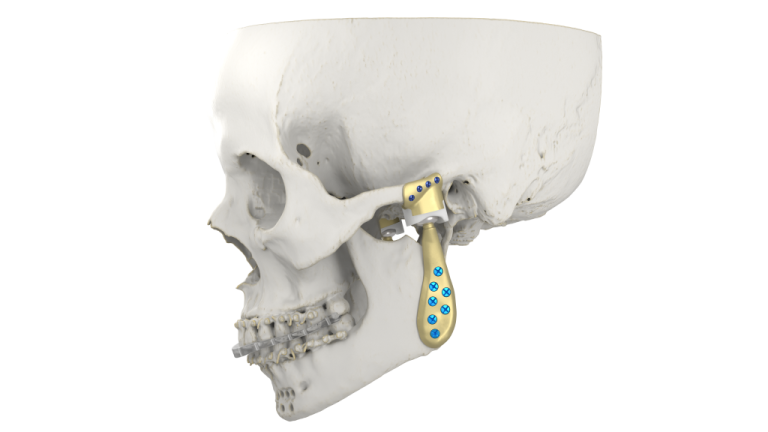After the success of a revolutionary eye transplant, Belgian 3D printing company I do presented its latest solution for the treatment of patients requiring total temporomandibular joint (TMJ) replacement.
Compiled TMJ Total Arthroplasty Systemthis solution offers a comprehensive approach to personalized treatment from a single company. The temporomandibular joint connects the jawbone to the skull, serving a critical function. For people with severe TMJ complications requiring joint replacement, Materialise’s new system provides a customized solution that combines implants, guides and digital design, simplifying the treatment process.
“The TMJ Total Arthroplasty System provides us with a completely customized solution. It enables the virtual pre-operative surgical plan to be seamlessly transferred to the operating room, enabling functional reconstruction of the temporomandibular joint,” said Maarten Zandbergen, CMF Market Manager at Materialise. “This end-to-end solution offers clinicians full support for this complex process. It truly facilitates personalized treatment by providing a complete system that includes virtual design software and clinical engineering support, as well as surgical guides, screws and the implant itself.”

Tailored approach to TMJ surgery
Promising results have been observed, based on a clinical study involving patients undergoing a TMJ replacement procedure. Results reported improved quality of life, reduced pain levels, increased satisfaction and improved ability to eat after surgery, with an excellent 97% accuracy rate in implant placement. In addition, clinicians also revealed a 100% success rate with the TMJ system one year after surgery, underscoring its effectiveness.
At the core of Materialise’s TMJ system is a fully digitized workflow, ensuring both efficiency and accuracy based on each patient’s unique anatomy. Clinical engineers from Materialize work closely with surgeons throughout the digital design process, culminating in the production of customized TMJ implants in-house at Materialize. This cohesive approach not only ensures compatibility with Materialise’s wider custom hardware craniomaxillofacial (CMF) solutions but also expands access to customized treatment options.
The digitized workflow begins with the acquisition of the patient’s CT scan and dental information. During an interactive online session, a Materialize clinical engineer collaborates with the treating physician on surgical planning and device design. After the design and planning of the device is complete, Materialize undertakes the manufacturing process of the customized TMJ implant in-house. The surgeon is then provided with the necessary implants and instruments for the surgery.
“Our implants, instruments, 3D design technology and clinical support empower surgeons as they strive to achieve accurate and reliable results,” said Martijn Orye, CMF Market Specialist. “Customized solutions are becoming the primary choice for more difficult or complex cases such as TMJ replacements. Our end-to-end solution simplifies and speeds up the slow personalization process with other providers.”


Materialise’s Total TMJ Arthroplasty System is currently available to surgeons in Europe, the UK and Brazil. This launch follows closely with the establishment of a new medical 3D printing facility in Michigan dedicated to the production of customized CMF titanium implants for facial reconstructive surgery. Prior to opening this facility, Materialize exclusively manufactured CMF titanium implants in Belgium. With the launch of the Michigan facility, the company aims to accelerate delivery times for customized implants to hospitals across the United States.
3D printed implants are modernizing oral care
Over the years, 3D printing has played a key role in offering personalized jaw treatments, enabling precise surgical planning and the creation of custom implants and guides, potentially leading to faster recovery times and better patient experiences. For example, Dimension Inx introduced CMFlex, the FDA-approved 3D printed bone graft, which was used in two clinical cases. It has been used for mandibular surgery, specifically mandibular angle augmentation, as well as maxillary surgery, known as segmental maxillary osteotomy procedures.
Composed of hydroxyapatite and a mixture of biodegradable polymers, CMFlex exhibits properties such as fluid absorption, bleeding control and facilitating bone remodeling. Surgeons can anticipate wider availability of CMFlex in 2024, providing them with a customizable solution to address bone defects in oral and maxillofacial surgery. Dr. Brian Farrell, DDS, MD, from Carolinas Center for Oral & Facial Surgeryand Dr. Derek Steinbacher, Director of West River Surgery Centerand were the surgeons behind the successful completion of two surgeries using CMFlex.
Back to 2022, Cerhum introduced MyBone, the first 3D printed bone graft to receive approval under the Medical Device Regulation 2017/745 and achieved ISO 13485certification. This development paved the way for European maxillofacial surgeons and orthopedists.
Collaboration with University of LiegeCerhum aimed to provide a patient-specific synthetic alternative to autografts. Composed of hydroxyapatite, MyBone features a porous structure designed to facilitate bone growth, particularly for the treatment of patients with severe facial deformities. The success of the initial surgeries paved the way for its wider adoption in medical practice.
What 3D printing trends what are industry leaders predicting this year?
What does it do? The future of 3D printing hold for the next 10 years?
To stay up to date with the latest 3D printing news, don’t forget to subscribe to 3D Printing Industry Newsletter or follow us Twitteror like our page Facebook.
While you’re here, why not subscribe to ours Youtube channel; Includes discussion, excerpts, short videos and webinar replays.
Looking for a job in the additive manufacturing industry? Visit 3D printing jobs for a selection of roles in the industry.
The featured image shows a 3D printed temporomandibular joint implant. Image via Materialise.

